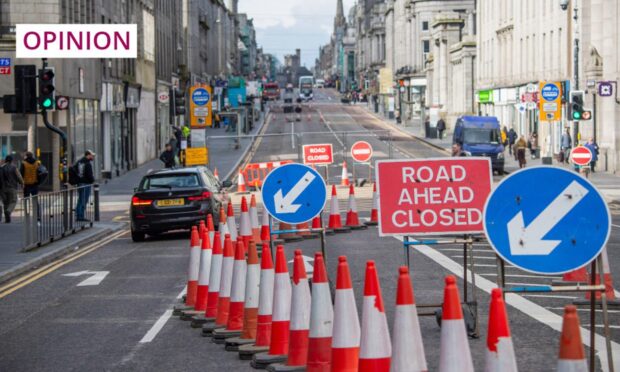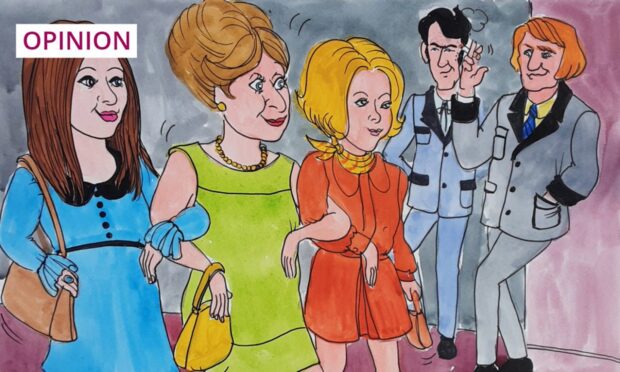Last February, when Caithness, Sutherland and Ross MSP Gail Ross asked the Holyrood authorities if she could carry out at least some of her parliamentary duties from a distance, she was reportedly informed that this would be neither feasible nor acceptable.
Then came lockdown, and the consequent discovery that not just parliaments but plenty of other organisations can continue to function satisfactorily while having the greater part of their personnel working from home.
Could this development point to new ways of boosting the economic and other prospects of areas like those Mrs Ross represents at Holyrood – areas which, on present projections, are set to lose as much as a fifth of their population in the next 20 years?
What’s clear is that already-occurring changes in the way the UK is organised have been accelerated by measures taken to bring Covid-19 under control.
Perhaps the most evident, and certainly the most widely discussed, of these changes stem from the difficulties confronting city centres. The growth of online shopping – something that’s speeded up in recent months – has resulted in more and more high street stores closing their doors.
But that’s not the only reason why, in future, people might have less reason to travel into town. The realisation that the effective running of a business doesn’t necessarily depend on having dozens, hundreds, even thousands, of people turning up each weekday morning at a single building is likely to lead to companies and public bodies exploring the possibility of cutting overheads by reducing office space.
Not every commercial concern is likely to go as far as social media giant Twitter, whose CEO Jack Dorsey announced he’ll be happy to have his entire workforce operating permanently from home. But there are bound to be other moves in that direction, resulting in city centres being abandoned increasingly by commuters as well as by shoppers.
One response may be an overturning of the way urban areas are structured. Instead of central districts being dominated by retail outlets and other commercial concerns, these districts could become again – as they once were – places where lots of people live. Housing could take the place of redundant retail outlets. Schools and other community facilities could be built on sites now occupied by office blocks.
If there is to be this sort of reversal of movement out of city centres into increasingly faraway suburbs or still more distant dormitory towns, why not a similar abandonment of the thinking that’s resulted from the centuries-old tendency for much of our countryside to become increasingly depopulated?
Time was when far more people lived in rural areas than in towns.
In Scotland and the rest of Britain this pattern started to alter radically a couple of hundred years ago. As farms became bigger and more mechanised, agricultural workforces began to shrink – just when newly industrialising cities needed more workers of every type. As towns grew, the countryside emptied, a development hurried along in much of Scotland’s rural north by the eviction of thousands of families from their homes.
Because urban areas have so long been characterised by population growth while rural districts have for just as long struggled to retain people, we tend to think this is how things have to be. It isn’t. It’s simply a product of the way economies and work practices have evolved. But what was once essential to business and industry – the concentration of lots of people in comparatively small areas – is today, as lockdown has shown, no longer the priority it once was.
This doesn’t mean cities are about to vanish. They aren’t – if only because the reasons for their existence are by no means solely economic. But it does mean planners and policy-makers ought to open their minds to the possibility of new approaches to combating the outflow of people from places like Caithness and Sutherland.
When looking to stem such outflows, development agencies have traditionally majored on job creation – by way, for example, of offering cash incentives to companies prepared to transfer even a part of their activities to localities where such activities are lacking.
The recent success of home-working suggests an alternative strategy. What could be tried is shifting investment from job creation into the provision of facilities that might encourage already-employed and home-working individuals and families to move to areas where, if community life is to be sustained, many more folk are urgently required.
The most basic such facility is housing. It has long been assumed that, when trying to counter depopulation, there’s no point in building houses in advance of having locally-available jobs for prospective householders to take up.
But in today’s world that’s maybe to get things the wrong way round.
Perhaps what job-starved rural localities really need is upfront development of housing and other key services – from schools to superfast broadband – geared to the requirements of those ever-more numerous home-workers who are in a position to bring their jobs with them.
Jim Hunter is a historian, award-winning author and emeritus professor of history at the University of the Highlands and Islands











